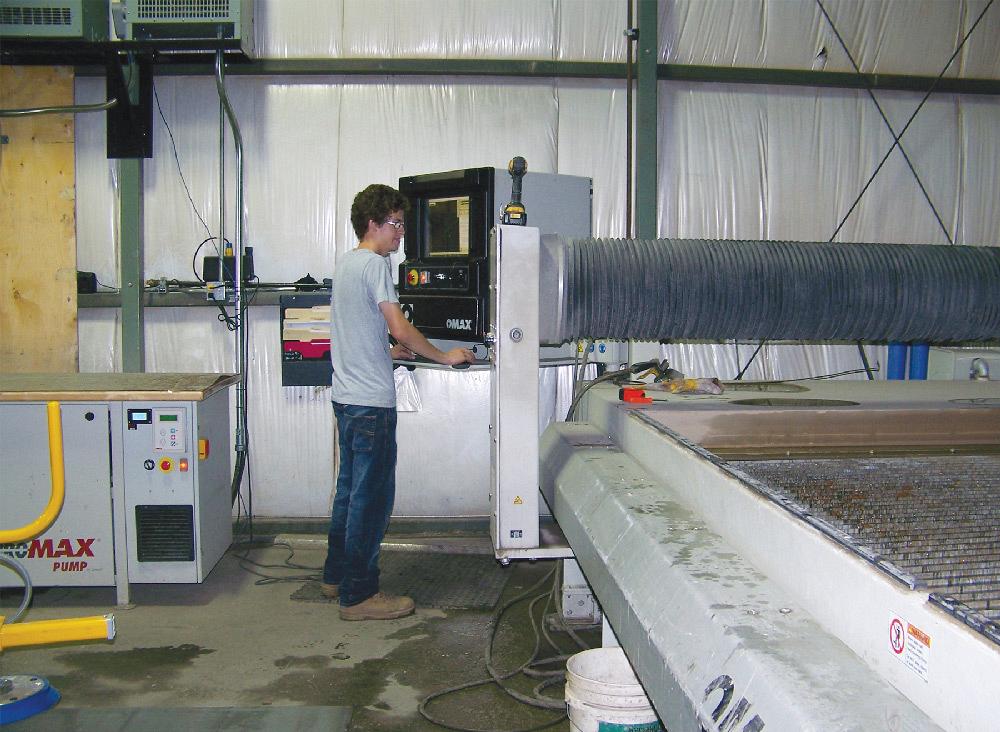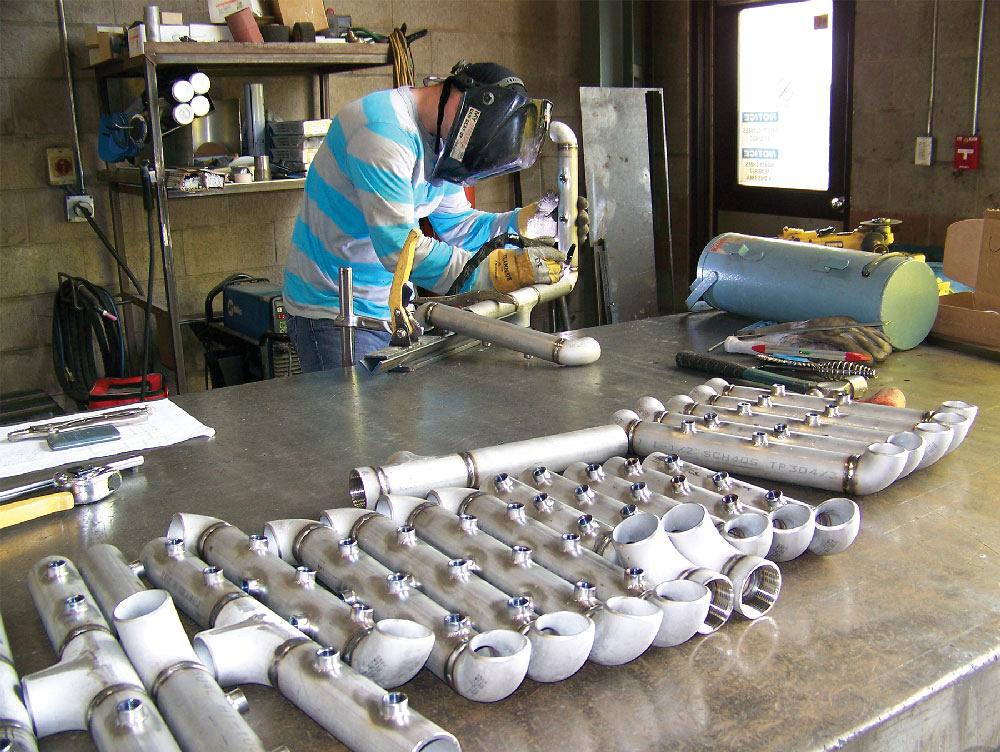- FMA
- The Fabricator
- FABTECH
- Canadian Metalworking
Universal Fabricating’s waterjet cuts out outsourcing delays
Rush parts are delivered in the customer’s time frame
- By Sue Roberts
- January 19, 2017
- Article
- Fabricating
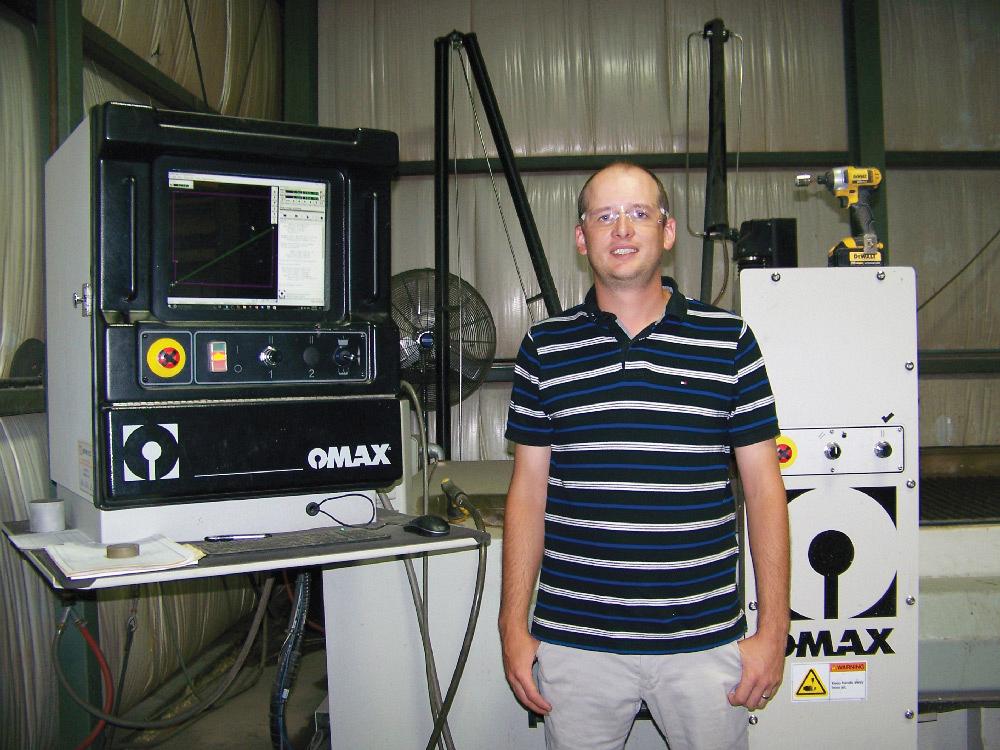
Neil Harms, general manager of Universal Fabricating, pauses by the OMAX 80X waterjet system added to the shop this year.
Producing one-offs, two-offs, and small-batch custom parts—anything made out of sheet metal, plate, or tube for the automotive market—is the niche Universal Fabricating in Kingsville, Ont., began calling its own 11 years ago. Since then its markets have expanded to include turnkey greenhouse structures and custom metal products, particularly those needed in a rush, for just about any application.
Automotive, though, still accounts for about 90 per cent of the business. Neil Harms, general manager, said, “In our customers’ automotive plants, robots can be integrated into conveyor lines that can be a kilometer long. We don’t do anything specifically for the robots, but we outfit the lines with anything and everything like switch brackets, drip pans, framing, conveyor guards—it’s a never-ending procession of ancillary parts.
“In the summer we do a lot with the agricultural industry. We build full-scale glass and poly greenhouse structures. A lot of the labour for these projects involves pipe and tube and is done on-site.” Shop processes include bending; vertical machining; welding; powder coating; galvanizing; saw, shear, and laser cutting; and the recently added waterjet cutting. Components that begin as part of a flat comprise about 40 per cent of the work. Much of it is needed immediately.
“Rush jobs may be the result of poor planning, engineering changes, or something that breaks. Whatever the reason, we get a rush job or two almost every day. One thing that separates us from our competitors is our willingness and ability to react to these emergencies--to do whatever it takes.
“I keep hearing that we are the guys our customers turn to when they are really in a jam. We don’t give them a time frame to produce their parts, we ask when they need them and get it done,” Harms said.
The Situation
Timing to produce some of those rush jobs was becoming a problem when waterjet cutting was outsourced.
“When we were farming out our waterjet cutting, we weren’t in control of our lead times,” Harms said. “We constantly had to ship material to the waterjet house and wait for their processing. And there were times when the material we got back wasn’t the right grade; it had gotten mixed up with another job. It was causing issues with our customers’ lead times.
“And as our company kept growing and the demand for waterjet cutting became greater, the value of our outsourcing became higher. There was a lot of investment in freight, a lot of moving parts involved to get the waterjet-cut parts. So we decided to invest in our own equipment.”
The Resolution
Purchasing an OMAX® 80X series JetMachining® Center gave Universal Fabricating control over the timing, quality, and cost of its waterjet-cut parts. It helped eliminate processes on some jobs, and it created a new revenue stream for the shop.
Harms said that initially they didn’t have enough work to keep the waterjet busy for an eight-hour shift, but that has changed. The company has shifted from outsourcing its own waterjet cutting to being the supplier of waterjet cutting services for area manufacturers, including some of its own competitors.
“Not every manufacturer has a waterjet, so we’ve been able to pick up a lot of customers just for the waterjet cutting. Now it’s running all day, every day.
“The prices we are able to quote--for example, the cost to cut a piece of corrugated aluminum--bring the jobs to us. We make a profit and the customer is happy. That tells me the waterjet operates efficiently.”
Many of the parts cut on the 6- by 12-ft. table are fairly small and cut from 1-in. aluminum, but it also processes copper, steel plate, stainless, neoprene, and rubber.
Cuts are achieved quietly using the submerged cutting process, a feature Harms and the operators appreciate. The equipment manufacturer quotes the cutting noise level as below 80 dBa at about 3 ft. away from the cutting process. A rapid water level control makes sure the tank’s water level is maintained.
The machine has taken jobs from some of the other shop processes and improved efficiencies and work flow both upstream and downstream, depending on the component. Size has been one deciding factor in moving some parts from the laser to the waterjet. Long parts cut from 12-ft. plates have been diverted from the laser, which has a 5- by 10-ft. table.
“In the past we could have split the part like that for cutting and welded it together, but now we put it on the waterjet’s larger table and make it in one piece. This eliminates a process, reduces labour, and improves the quality.”Cutting travel for the 80X is 13 ft. 4 in. by 6 ft. 8 in. The table supports up to 400 lbs./ft.
The waterjet has also found a place upstream from the mills. “We do a lot of complicated machine parts where the waterjet has been a help. Let’s say we’re machining a 3-in. by 3-in. by 3-in. cube into a part that has an odd shape and several holes. Before the waterjet, we would have cut the cube on the saw, machined the entire exterior, then machined the interior features. Now we can cut the unusual outer shape on the waterjet and machine just the interior pockets.
“Taking this kind of load off milling, which is always my busiest department, has given us more time for jobs that require the mills,” said Harms.
Technologies Plus Service
Domestic and U.S. customers keep returning to Universal Fabricating, and word-of-mouth brings new customers in. Although it does quote and win some production jobs, custom projects continue to be the shop’s main focus.
“You’ll see large shops that have six or seven big projects on the go. We just happen to have 175 work orders active on the shop floor at a time,” Harms said. “It’s a little challenging to manage, but we have a good system and a good team.
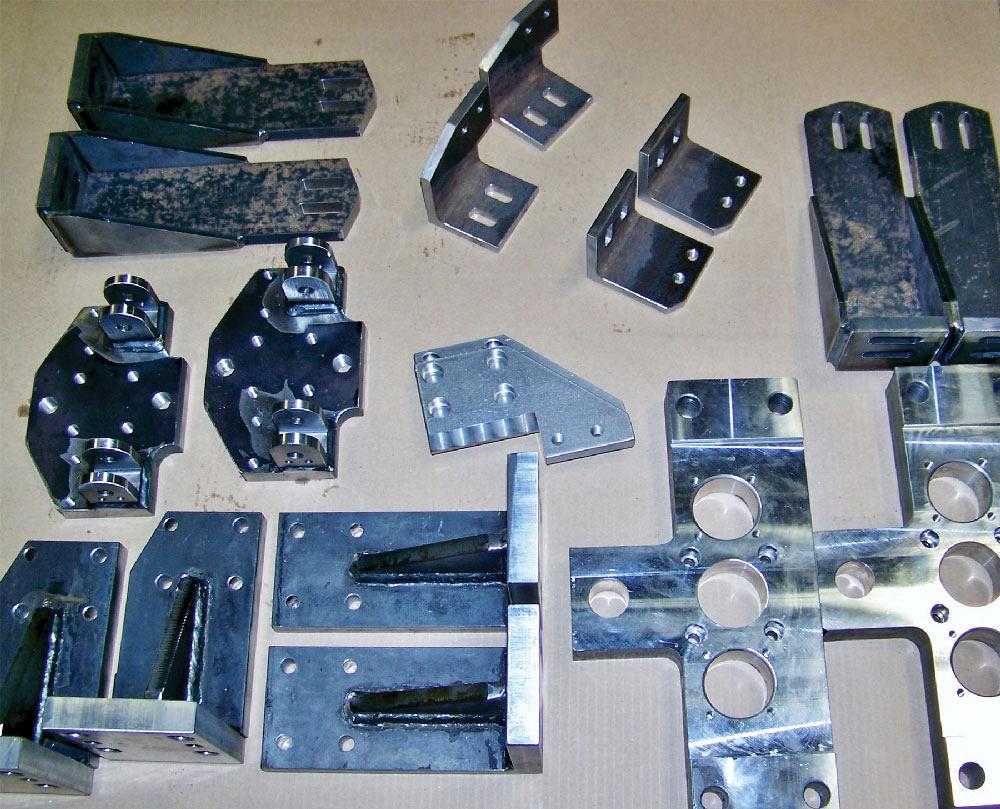
Custom parts for the automotive industry are either waterjet cut, machined, or produced using a combination of the two processes.
“We continue investing in new technologies to improve our efficiency. We’ve invested a lot over the past five years and it keeps our business growing. Customers keep coming back. We service them well and they are loyal to us.”
OMAX, 253-872-2300, www.omax.com
About the Author

Sue Roberts
2135 Point Blvd
Elgin, IL 60123
815-227-8241
Sue Roberts, associate editor, contributes to both Canadian Metalworking and Canadian Fabricating & Welding. A metalworking industry veteran, she has contributed to marketing communications efforts and written B2B articles for the metal forming and fabricating, agriculture, food, financial, and regional tourism industries.
Roberts is a Northern Illinois University journalism graduate.
subscribe now


Keep up to date with the latest news, events, and technology for all things metal from our pair of monthly magazines written specifically for Canadian manufacturers!
Start Your Free Subscription- Trending Articles
CWB Group launches full-cycle assessment and training program

Achieving success with mechanized plasma cutting

3D laser tube cutting system available in 3, 4, or 5 kW

Brushless copper tubing cutter adjusts to ODs up to 2-1/8 in.

Welding system features four advanced MIG/MAG WeldModes
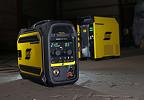
- Industry Events
MME Winnipeg
- April 30, 2024
- Winnipeg, ON Canada
CTMA Economic Uncertainty: Helping You Navigate Windsor Seminar
- April 30, 2024
- Windsor, ON Canada
CTMA Economic Uncertainty: Helping You Navigate Kitchener Seminar
- May 2, 2024
- Kitchener, ON Canada
Automate 2024
- May 6 - 9, 2024
- Chicago, IL
ANCA Open House
- May 7 - 8, 2024
- Wixom, MI













